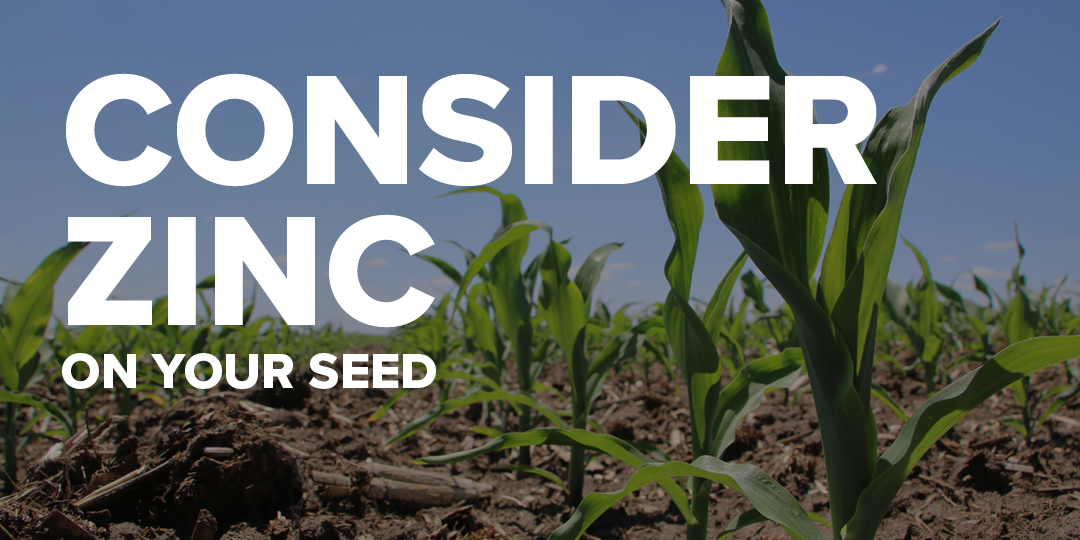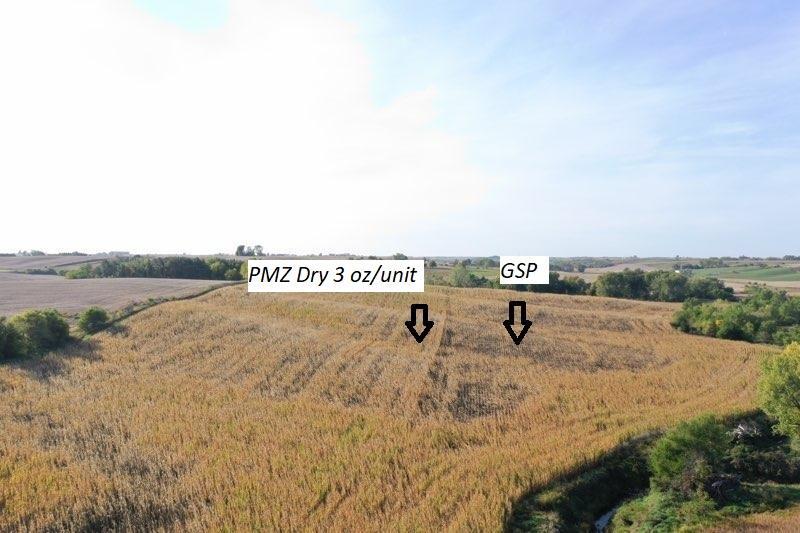
Corn has a high demand for Zinc (Zn) relative to other crops. It’s an essential micronutrient that is a component of various enzymes that are responsible for driving metabolic reactions in a plant. Growth and development would stop if specific enzymes were not present in plant tissue. Carbohydrate, protein, and chlorophyll formation is significantly reduced in zinc deficient plants. Often in corn, early season zinc availability is critical and lack of this early season availability can be triggered by simply not having enough available zinc, cool soils, high soil pH which in not common in our area, or a zinc tie-up caused by high phosphorus (P) soil test levels or high applied P from commercial or manure fertilizer sources which is a very common problem in our area.
Zinc Tie Up Due To High Phosphorus

Phosphorus (P) fertilizer is often added to cropping systems to increase yield, but growers should not overlook the importance of micronutrients like Zinc (Zn). Understanding some of the nutrient interactions that affect nutrient availability can help with management decisions like fertilizer source. The interaction of P and Zn has been well researched and documented in the fields of soil chemistry and plant nutrition. For example, research shows that high rates of P fertilizer without adequate plant available Zn can reduce Zn uptake by the roots, induce Zn deficiency, and decrease plant growth and yield.
Getting Early Season Zinc

Zinc sources can be broadcast flat or variable rates based on soil testing, however there are many fields that do not currently use this practice, or they rely on past manure as a primary source. Since zinc very early in the development of the corn plant is critical, adding a zinc source at planting in addition to having adequate soil test levels is a cost effective as well as highly recommended practice to achieve maximum yield results. The ideal application method would be in an in-furrow liquid starter fertilizer that contains zinc such as 7-23-5 with a full micronutrient package, however most planters in this area do not have this option. The other option that anyone can take advantage of the use of a nutritional flow aid and talc replacement product like Rocket Seeds PMZ that contain zinc as part of the guaranteed analysis. This option is very inexpensive and is easy to incorporate into any operation since it’s very easy to work with. It can also have the side benefit of a direct replacement for talc and/or graphite in the planter.
Foliar Applications and Tissue Testing Option
Since zinc is a such a well-known and important micronutrient for corn development, there has been a lot of work done on the use of an early season tissue test to help uncover deficiencies as well as foliar applications that can be done in season to help enhance yield. The best recommendation would to have a baseline of a grid soil test that has the zinc added as part of the testing package for every field as well as a good understanding of the phosphorus levels as well due to the known interaction. Tissue testing in season can then be incorporated and used to help make additional application decisions. Since zinc is so important, you should consider all of the noted practices to help manage it effectively since the timing and rate of seed applied, foliar applied, and soil applied can all impact the plant in a positive fashion.